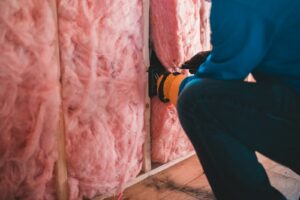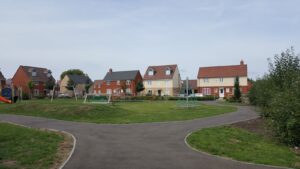The presence of absence
The presence of absence. I have always liked that phrase. The memory of past experiences, the connection to a past I have never lived in, the loss felt when friends leave to go home. Absence is felt when you feel, when you live. My art teacher in school was a potter. He loved the idea of making something out of nothing. Somedays, I feel that there is a lot of talk about creating nothing from nothing. Somedays, it feels that absence is the dominant presence.
Recently, I have been involved in a piece of research on ‘Delivering Better Places’. It is a collaboration between the Scottish Centre for Regeneration, A+DS, and RICS. The research, carried out by University of Glasgow, sought to understand why some places build better places for people. The work was not about how these places look. It was about the thinking behind the creation of the place in the first instance. The research looks at eight case studies across Europe. The lessons learned identify two strategic issues, and three tactical issues. The strategic issues are leadership and stewardship. These are particularly necessary around these questions: what kind of place are you trying to create, why and for whom? The tactical issues relate to process; initiation [getting the right team, funding, land, services and so on], frameworks [the matrix for pulling all the parts together] and implementation [doing it]. At the launch of the research a few weeks ago, the consensus was that we spend a lot of time on tactics. We are generally poor at the strategic bits, and often very poor at shaping outcomes. If this means there is a presence of an absence, it seems to be this: leadership and meaningful participation by people.
Discussing this work, and a set of case studies on the work of Urban Regeneration Companies in Scotland to a Cross Party Group at Scottish Parliament, one person pointed out, angrily, that there were no people in the photos. In seeking to illustrate the hardware of a place, it is easy to forget that we also need to illustrate how people use these spaces. This made me think about the nature of our ordinary public spaces, our contemporary public life, of reports like ‘Equally Spaced’ by Demos. The person in the audience had a point: forgetting of the obvious, of showing people, is a problem designers in particular should address. What was also going through my mind though was this: in some places, there is no body there. The public life that we imagine should happen does not happen. People are somewhere else, doing something else. Sometimes, in some places, there actually seems to be nothing to do. Why, and what does this mean for leadership in delivering better places?
The University of Stirling has produced some research about the effects of the recession on young people. It describes the real issue of little or no opportunities for youth, especially those in the 16-25 age group. This is the presence of another kind of absence. The research describes the trauma this phenomenon can cause, on mental health, on self esteem. I genuinely wept when I read it. I felt saddened, horrified and angry. I understand that I share a responsibility in making a difference to this story, however small. It is a collective responsibility. It is something that must shape thinking about the kind of place we want to create, together. The Chief Medical Officer in Scotland, Dr. Harry Burns, suggests that we need to build an ‘architecture of hope’. I like that phrase very much. I’d like to help build it.
















…and what I’d like to help build is the kind of public services where we link all these things – placemaking, regeneration, poverty, mental health, addiction services, etc – around making places that are better for people. Not better for professionals, but better for people.
I think that’s what you’re describing in your blog – and I know from experience that you’re doing a lot of good work around it. I look forward to reading more!
Nick